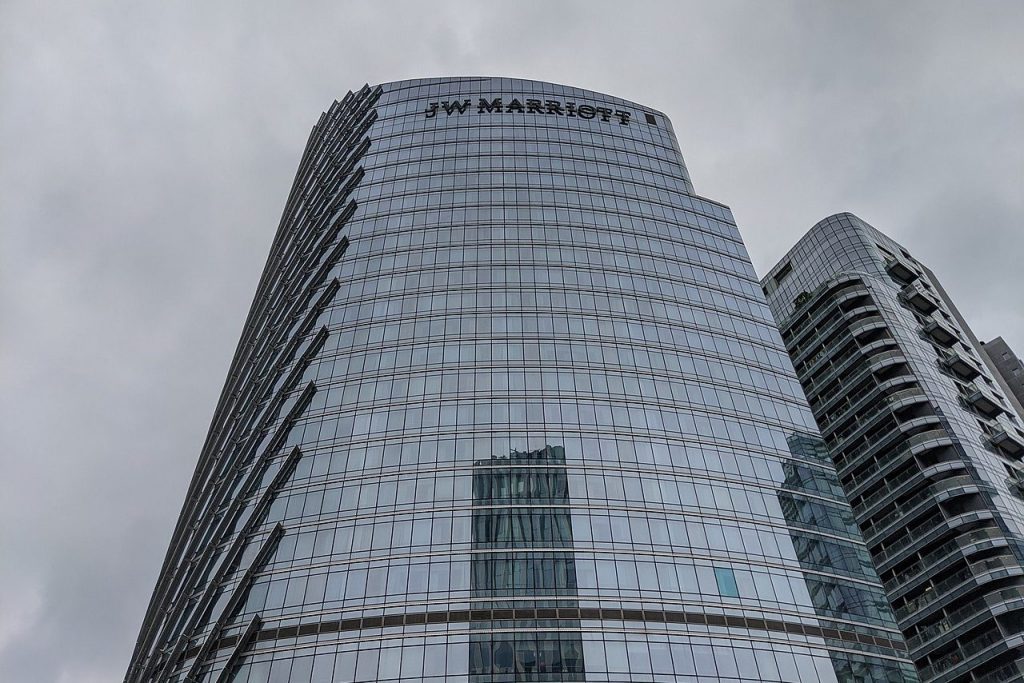Skift Take
Marriott's level of profitability is unheard of in the hotel industry at the moment, but some of the cost cutting that made it possible isn't permanent.
The world’s largest hotel company proved Friday major profits are possible, even in the depths of a global pandemic.
Marriott reported a $100 million third quarter profit at a time when competitors like Hyatt and Hilton are still losing money. Even companies like Choice Hotels and Wyndham, which were also profitable during the quarter, came nowhere close to Marriott’s haul.
Company leaders chalk up the financial success to a combination of significant cost cutting and brand diversity in strong markets. But there are still headwinds ahead in Marriott’s quest for a full financial recovery.
“While the recovery is going to take longer than anyone would like, we see encouraging signs demand can be resilient,” Marriott CEO Arne Sorenson said during an investor call Friday morning. “I am confident we are well-positioned for now and the future.”
The third quarter was one of significant performance rebuilding from the financial worst seen from the pandemic (so far) earlier this year. Occupancy in China, Marriott’s best-performing market at the moment, grew from 9 percent in February to 61 percent in the third quarter. Marriott’s North American portfolio doubled its occupancy rate to 37 percent in the third quarter.
The vast majority of hotel owners paid Marriott various brand affiliation fees on time or on payment plans, according to Leeny Oberg, the company’s chief financial officer.
“While the timing of a full recovery is unpredictable, we are confident Covid-19 will be contained and travel will come back quickly,” she added.
But performance is still well short of pre-pandemic times. Revenue per available room — the hotel industry’s key performance metric — was down nearly 66 percent across Marriott’s global portfolio. Operational adjustments and massive cost-cutting moves helped drive a profit despite weak travel demand.
Marriott cut capital expenditures, furloughed many of its staffers at the beginning of the pandemic, and reduced work weeks and cut pay for employees who remained. There were also permanent corporate layoffs. The maneuvers reduced corporate and overhead costs by roughly 25 percent.
Relaxing brand standards and cutting costs at the hotel level, like suspending full-service food and beverage options at some hotels and the push to contactless check-in, lowered financial breakeven points by as much as 5 percent.
Some of these cost cuts are only temporary, as a bulk of furloughed employees were called back at the end of September. But Marriott’s leaders continue to look at ways to streamline operations for beyond the pandemic.
“I think what we want to do is have as many of the savings we’ve been able to find and implement be long-lasting,” Sorenson said.
Brand Distinction Amid the Cost-Cutting Era
Financial streamlining is a tricky maneuver for a company like Marriott, which operates 30 distinct brands. Cost cuts to programs like food and beverage services theoretically wipes out, even if only temporarily, a major part of a respective brand’s identity.
While Marriott’s chief executive indicated food and beverage cuts were a leading way to save money at the individual hotel level, contactless features like mobile check-in and check-out are more permanent ways to achieve a lower financial breakeven point for hoteliers. Food and beverage costs will eventually have to come back onto a balance sheet.
“Guests can be sympathetic and empathetic in a tough time, but once we get back to normal, they’re going to want the full services they’ve come to expect,” Sorenson said. “At the end of the day, we have to make sure the guest is satisfied with the experience they’re getting.”
The Sonesta Debate
Marriott may have profitability, but it is also slated to lose 98 hotels owned by Boston-based real estate firm Service Properties Trust, or SVC, by early next year. SVC faulted Marriott for failing to make an $11 million property guarantee payment on 122 hotels across 31 states. SVC plans to only keep 98 of those as hotels.
Similar to another deal had with IHG, SVC terminated the agreement in favor of switching brand affiliation to Sonesta International Hotels Corp., a smaller company in which SVC owns a 34 percent stake.
While Marriott is slated to grow its room count by as much as 3 percent this year, Sorenson admitted the SVC termination would impede growth by 1 percent — but only in the short-term. Marriott is already looking at replacing the 98 hotels with new properties.
“Our development team has already looked at that list and are obviously going to be focused on the markets where they are convinced hotels would make good economic sense,” he said. “They will be new builds and we are in a pandemic, so it’s not like they will be opening in the first quarter of 2021, but we are moving fast.”
He also disagreed with SVC’s economic argument, which has been that its hotels generally perform better under a Sonesta flag.
SVC previously converted 16 IHG hotels it owned to Sonesta flags in 2012, and the real estate company reported revenue improved by more than 14 percent under the new flag affiliation.
But Sorenson said he expected the hotels under a Sonesta flag would have roughly half the return on investment as they would under Marriott. But that assertion doesn’t appear to be enough for SVC.
“We are in discussions with SVC today on the possibility of renewing that [deal],” Sorenson said. “I think, based on what we heard as recently as yesterday from that team, they seem to be hard-wired to make those hotels Sonestas.”
Have a confidential tip for Skift? Get in touch
Tags: coronavirus, coronavirus recovery, marriott
Photo credit: Marriott reported a $100 million third quarter profit, thanks to major cost cuts and an ongoing recovery in occupancy. Handsome1111111 / Wikimedia
